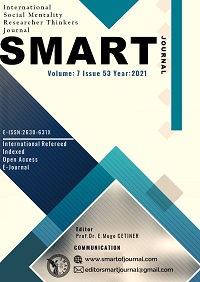Author :
Abstract
عندما يتطور الصراع بين الحكام والشعوب إلى درجة متطورة من الصراع المسلح، وتسيل الدماء بين الطرفين، فإن إعادة النسيج الاجتماعي إلى طبيعته يكون في غاية الصعوبة والتعقيد، ويحمل كل طرف سياسات الطرف الآخر على سوء النوايا، ويسبق الانتقام والأحقاد العقل والمنطق، وتساهم التدخلات الخارجية في تعزيز التشظي وتفتت المجتمع. وهذا يجعل من الضروري دراسة سبل إصلاح النسيج الاجتماعي لتلك الدول بعد مرحلة الصراع المسلح العنيف، وإعادة هيكلة البنية المجتمعية من جديد، وطرح رؤية جديدة مختلفة تدرأ احتمالات الصراع مستقبلاً. وقد عالج البحث جدلية الإصلاح من القمة إلى القاعدة أو العكس، وجدلية مجالسة الحكام دون تبعية لهم، وإشكالية الخروج من دوامة الجهل، وضبط النفس، والاعتدال في الطرح، وتقليل وتيرة العداء للدين عند الحكام، ورفع مستوى الوعي الديني لدى الشعوب، وغير ذلك من القضايا التي تعيد ترميم هيكلية المجتمع من جديد. وقد تم بحث هذا الموضوع من خلال المباحث التالية: المبحث الأول: إصلاح السلطة السياسية. المبحث الثاني: إصلاح الشعب. المبحث الثالث: تقليل الهوة بين السلطة والشعب.
Keywords
Abstract
When the conflict between rulers and peoples develops to an advanced level of armed conflict, and blood flows between the two parties, restoring the social fabric to normality is extremely difficult and complex, and each party looks at the other's policies in suspicion; revenge and grudges precede reason and logic. External interventions contribute in promoting fragmentation and disintegration of society. This makes it necessary to study ways to reform the social fabric of those countries after the violent armed conflict era, re-construct the societal structure again, and put forward a different and novel vision that averts the possibilities of conflict in the future. The research dealt with the dialectic of reform from top to bottom or vice versa, the dialectic of sitting with rulers without subordination to them, the problem of getting out of the cycle of ignorance, self-control, moderation in presentation, reducing the pace of hostility to religion among the rulers, raising the level of religious awareness among peoples, and other issues which restore the structure of society anew. This topic was approached through the following themes: First theme: reforming the political authority Second theme: reforming people Third theme: reducing the gap between the authority and the people





